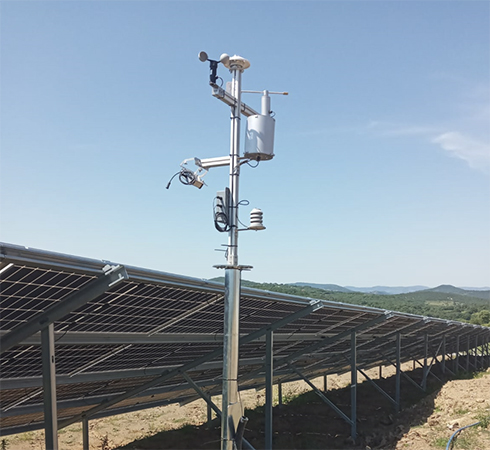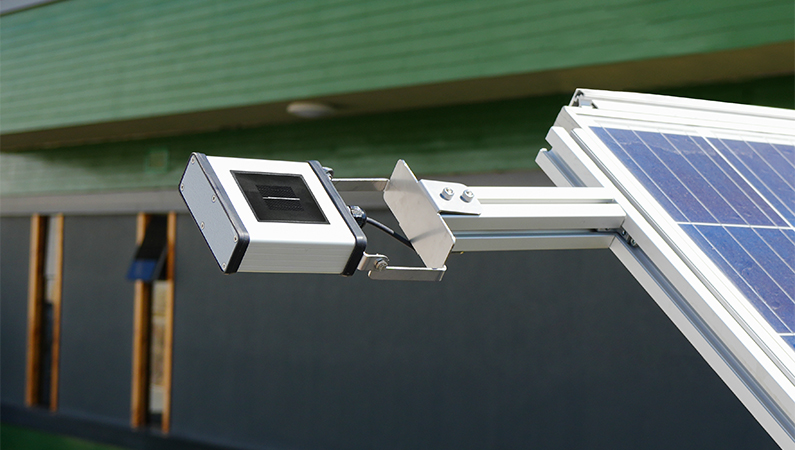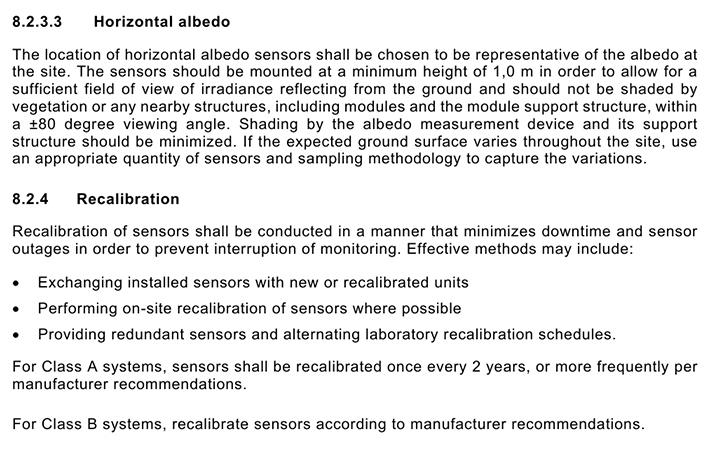Your cart is currently empty!
Bifacial PV Modules and Albedometers

Bifacial photovoltaic (PV) modules are a major improvement in solar technology. They offer the ability to harness sunlight from both the front and rear surfaces. The bifacial design enables the modules to capture not only the direct solar irradiance but also the reflected light from surrounding surfaces. Thus, enhancing overall energy production compared to monofacial modules.
Components and mechanisms of bifacial PV modules:
Bifacial modules contain several components that make them different than conventional monofacial panels:

Similar to conventional monofacial panels, the front of bifacial modules is made up of silicon solar cells that convert direct sunlight into electricity via the photovoltaic effect. Solar cells at the back also capture reflected sunlight, also known as albedo, from ground or nearby surfaces. This characteristic allows bifacial solar modules to use indirect light, to maximizing the power output.
The efficiency of rear-side solar cells is highly dependent on the albedo effect. The more the reflective surfaces are, such as white concrete or snow, the higher their efficiency. In order to gain full exposure of light reflected, bifacial modules are placed on raised installations, such as ground-mounted racks or special rooftop systems. This placement offers higher penetration of light to the rear side, making full light capture as a whole.
Both the back and front solar cells are connected by busbars and interconnectors, either in parallel or series configurations for optimum generation of electricity and ensuring good flow of current in the module.
Albedometers for Bifacial PV Systems

An Albedometer is a critical sensor used to measure the albedo effect by assessing the ratio of reflected solar irradiance to total incoming solar irradiance. It usually consists of two PV reference cells; One pointing upwards to measure total solar irradiance and the other pointing downwards to measure reflected irradiance.
In the context of bifacial PV systems, PV reference cells or pyranometers serve several essential functions:
- Site assessment: By determining the reflectivity of potential mounting locations, albedometers help determine the suitability of a site for bifacial modules. Areas with higher albedo values are more favourable, as they can enhance power output from the back side.
- Performance monitoring: Continuous albedo measurements enable operators to monitor and analyse the performance of bifacial PV installations, making it easier to identify deviations from expected energy production and make necessary adjustments.
- System optimisation: Data from albedometers can guide decisions on module placement, tilt angles and the selection or modification of ground surfaces to maximise the albedo effect, thereby improving the overall efficiency of the PV system.
IEC Standards and Albedometer Specifications
The International Electrotechnical Commission (IEC) has established standards that govern the measurement of albedo in PV monitoring systems. IEC 61724-1 is the primary standard defining the requirements for monitoring PV system performance, including the proper use and specifications of albedometers.
According to IEC 61724-1, albedometers should meet the following specifications:
- Measurement Accuracy: Albedometers must meet Class A or Class B performance standards, ensuring high precision in solar irradiance measurements.
- Placement: Horizontal albedo sensors shall be positioned in locations that accurately represent the site’s albedo conditions
- Mounting Height: Sensors must be installed at a minimum height of 1 m to ensure an adequate field of view for measuring irradiance reflected from the ground.
- Spectral Response: The reference cells used in albedometers should have a spectral range that aligns with the typical solar spectrum to ensure accurate reflectance measurements.
- Calibration Requirements: Regular calibration against a reference standard is necessary to maintain measurement reliability and accuracy.

To sum up, bifacial photovoltaic modules, when combined with accurate albedo measurement through albedometers, represent a promising way to enhance solar power generation. By effectively utilising both direct and reflected sunlight, these systems can achieve higher efficiencies and contribute significantly to the development of renewable energy solutions.